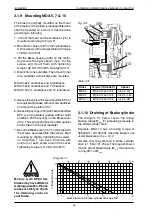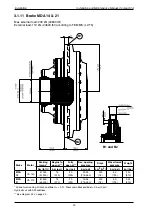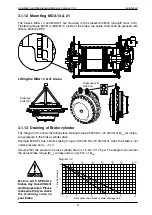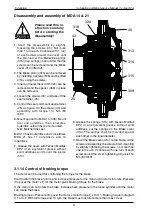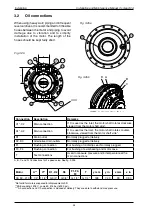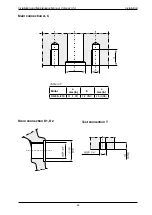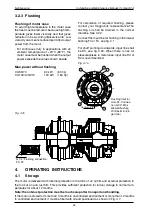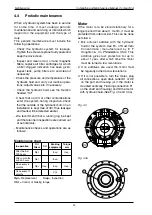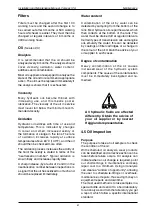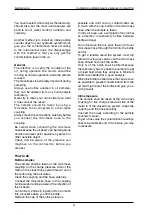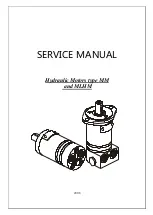
4
Installation and Maintenance Manual, Compact CA
You have to select what analysis the laboratory
should take, but the most used analysis are
particle count, water content, oxidation and
viscosity.
Another method is to install an inline particle
counter direct in your hydraulic system which
give you the contamination level according
to the international rules, the disadvantage
with this method is that you only get the
contamination level in the oil.
General
The intention is to verify the condition of the
oil during operation.The motors should be
running at normal operation while the sample
is taken.
The cleanliness is extremely important during
sampling.
Always use bottles adapted to oil samples,
they can be ordered from any fluid analysis
laboratory.
Never try to clean your own bottle if you want
a true value of the result.
The sample should be taken by using a
mini-mess hose connected to a mini-mess
coupling.
Always clean the connections carefully before
you connect the mini-mess hose to the
coupling.
Be careful when connecting the mini-mess
hose because the oil beam can be dangerous
and should never point against any person or
other sensible object.
Check and be aware of the pressure you
mayhave on the connection before you
connect.
How to do
Bottle samples
The sample shall be taken at the mini-mess
coupling on the charge pressure side of the
motor in the closed loop system. Never out of
the tank using the ball valves.
Clean the coupling and the hose carefully.
Connect the mini-mess hose to the coupling
but be careful and be aware of the direction of
the oil beam.
Let minimum litres (0,6 gallon US) of oil flush
into a bucket before you fill the bottle.
Remove the cap of the bottle as late as
possible and don’t let any contamination be
in touch with the cap, bottle or the mini-mess
hose when the sample is taken.
In dirty air area, use a soft plastic foil (normal
as protection in laboratory bottles between
bottle and cap).
Do not remove the foil, prick the end of your
mini-mess hose through the foil into the bottle
and fill.
To get a reliable result the system must run
without moving any valves and the mini-mess
hose should not touch the bottle.
Only ¾ of the bottle shall be filled because
the laboratory has to shake the sample to get
a mixed fluid when they analyse it. Minimum
00ml are needed for a good analysis.
When the bottled is filled close the cap as soon
as possible to prevent contamination from the
air that might enter the bottle and give you a
wrong result.
Inline measure
The sample shall be taken at the mini-mess
coupling on the charge pressure side of the
motor in of the closed loop system. Clean the
coupling and the hose carefully.
Connect the hoses according to the particle
counters manual.
To get a true value the contamination readings
have to be stable about 10 min before you stop
to measure.
Maintenance

